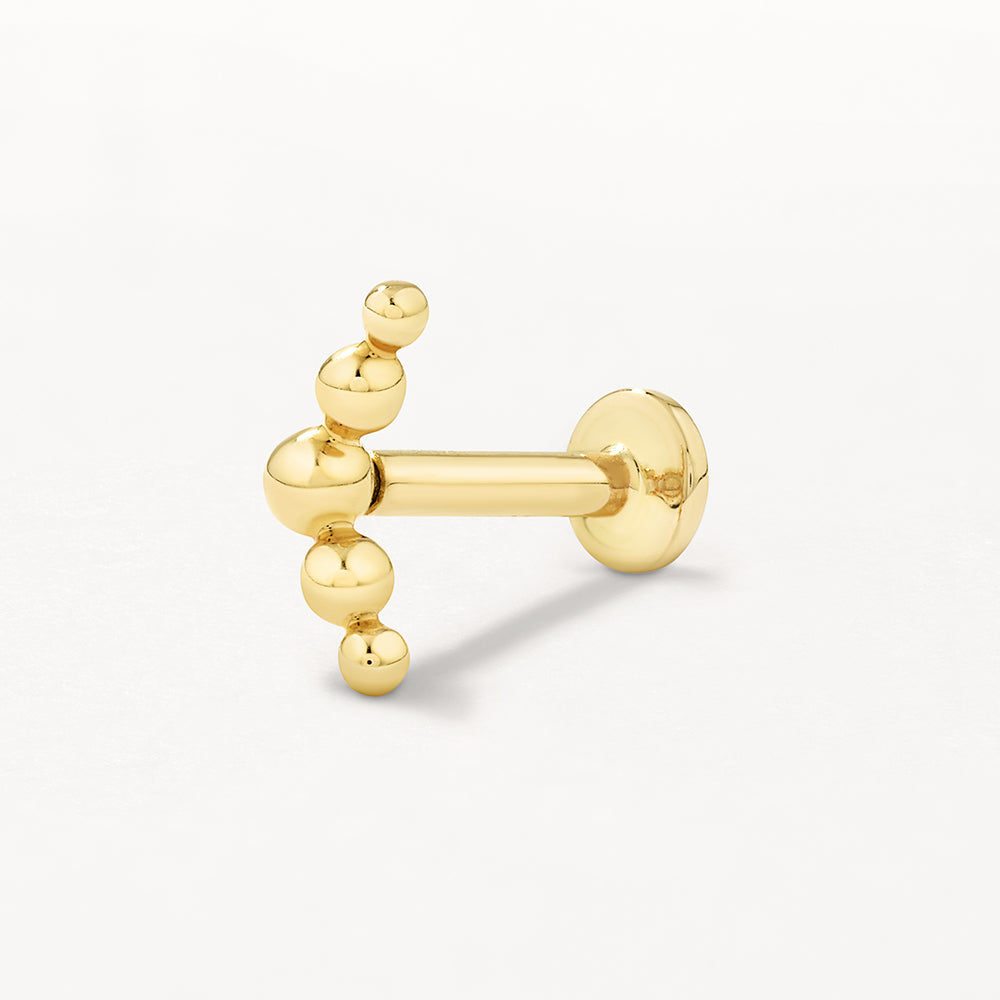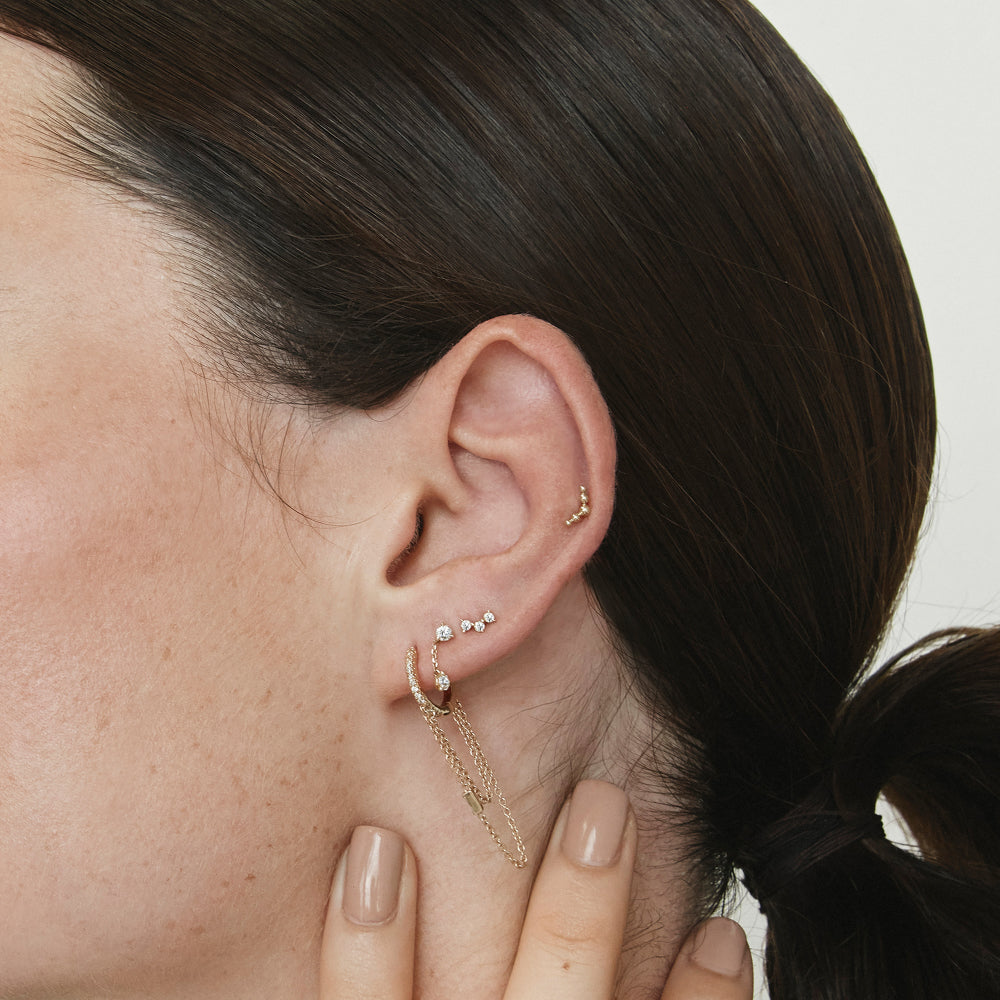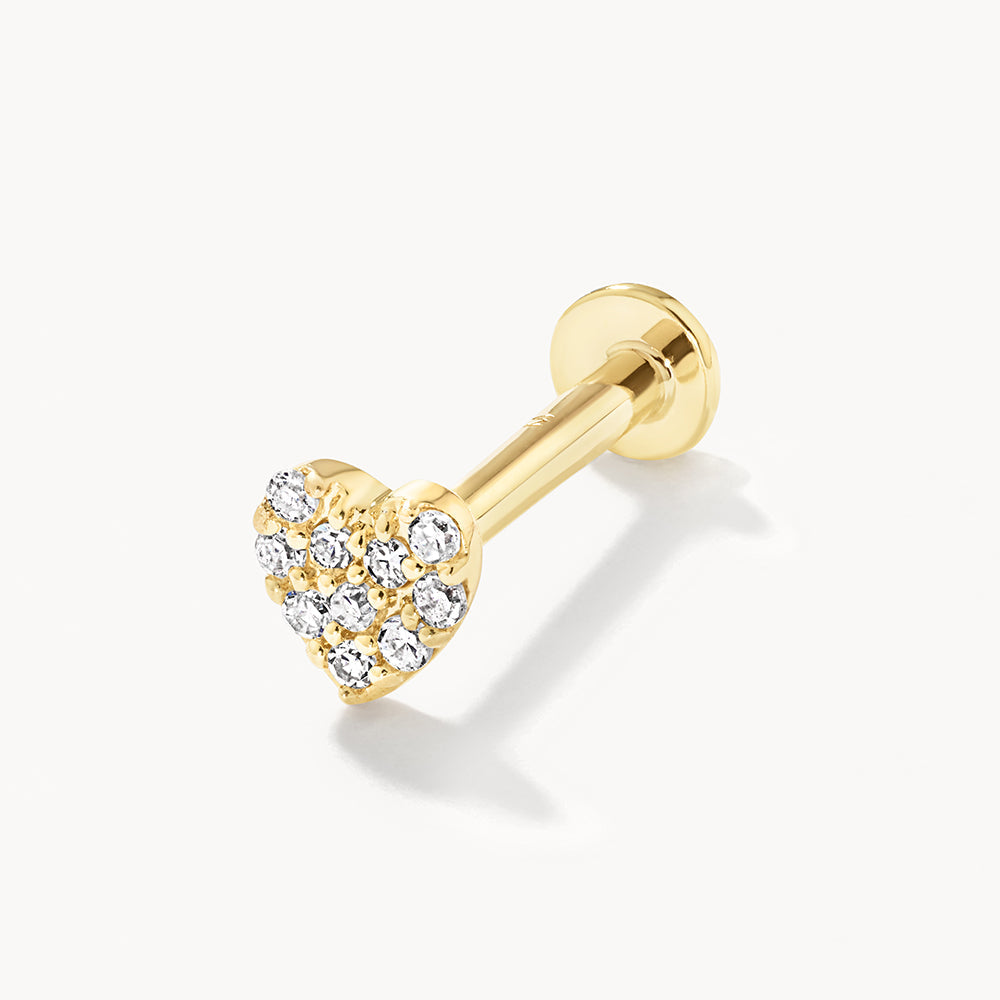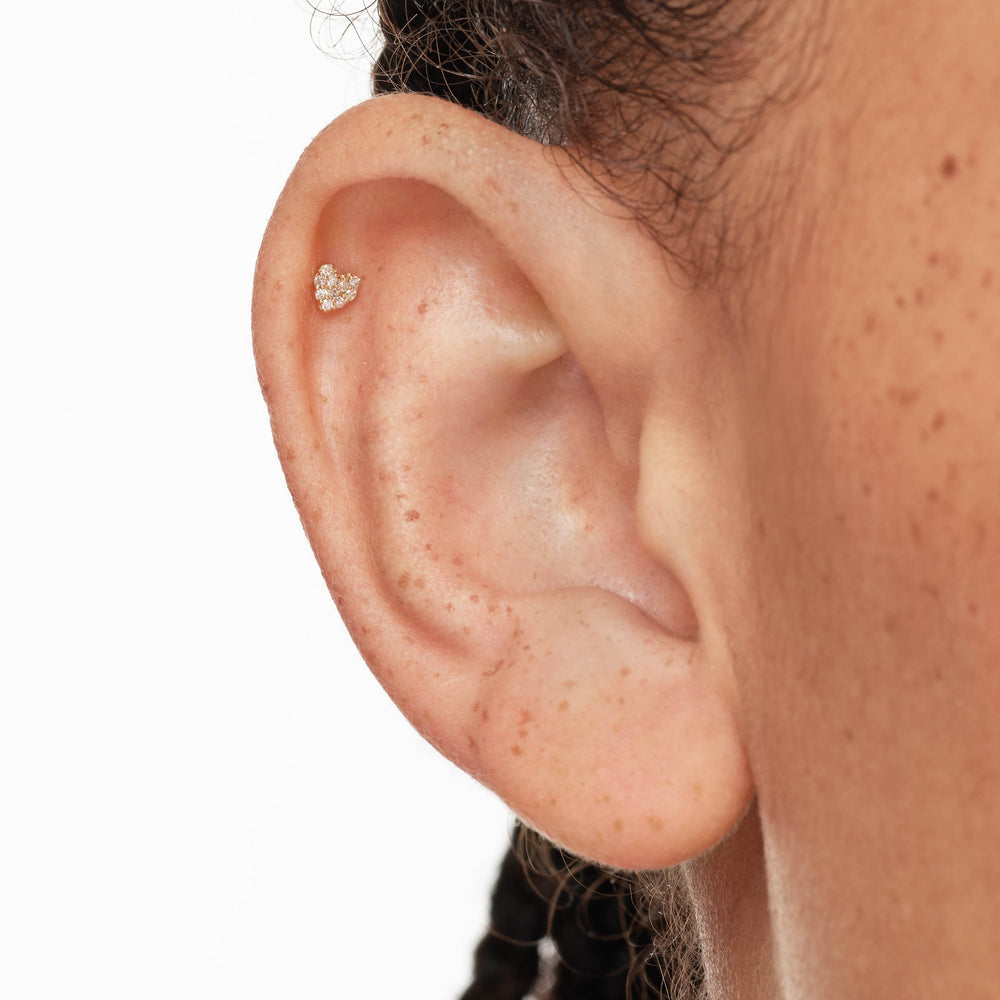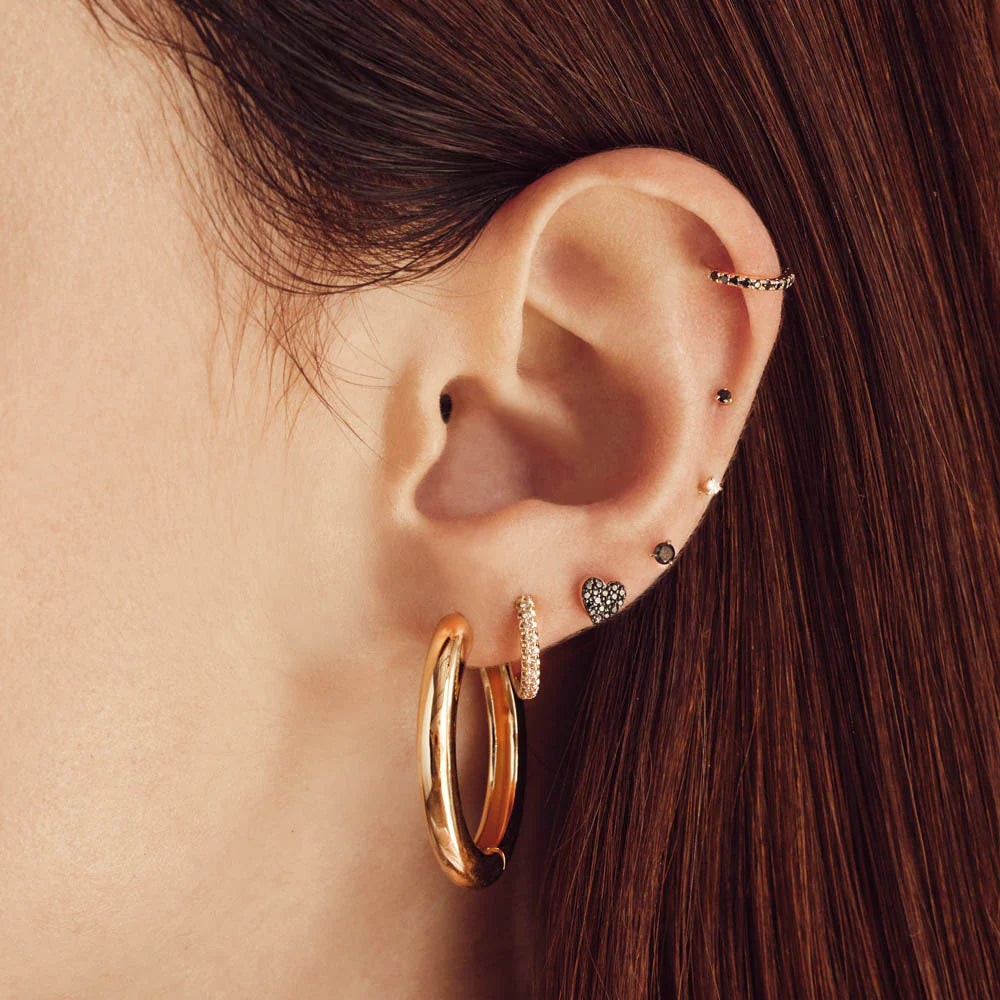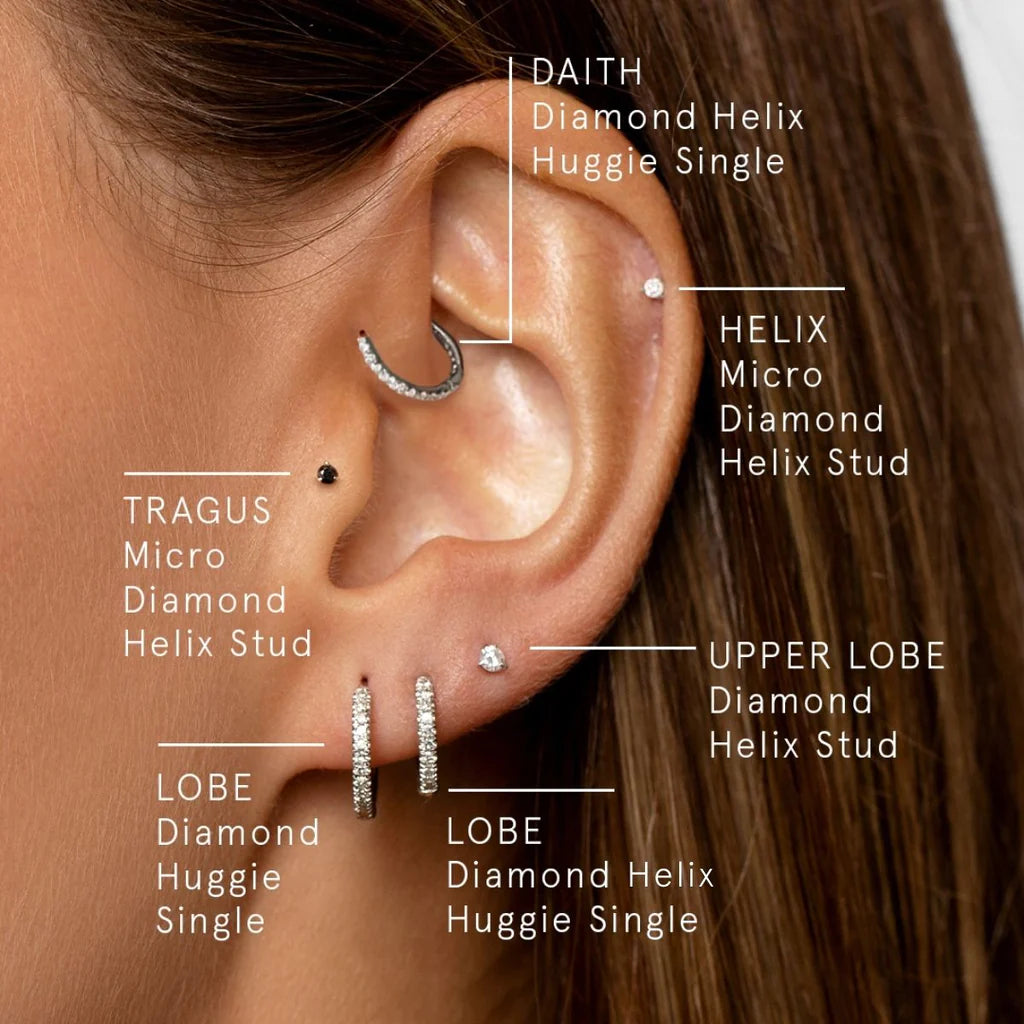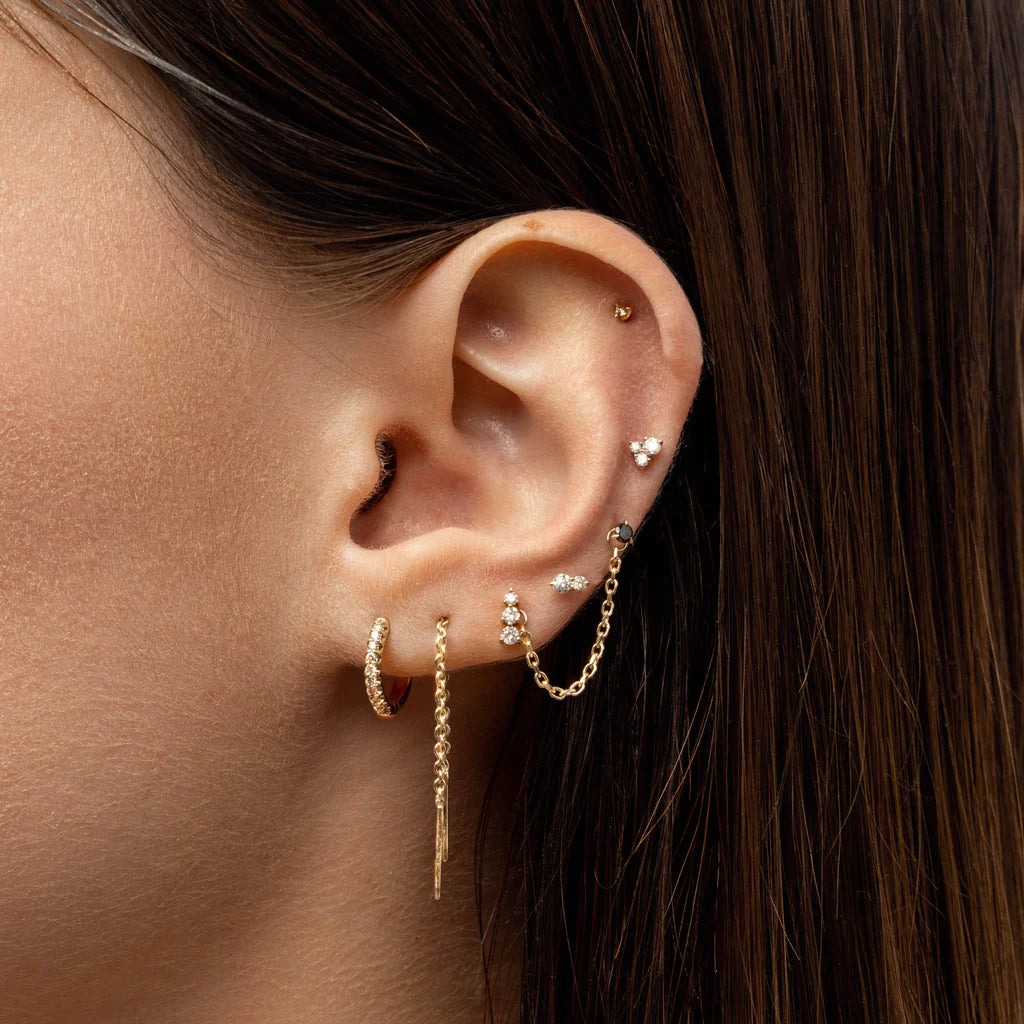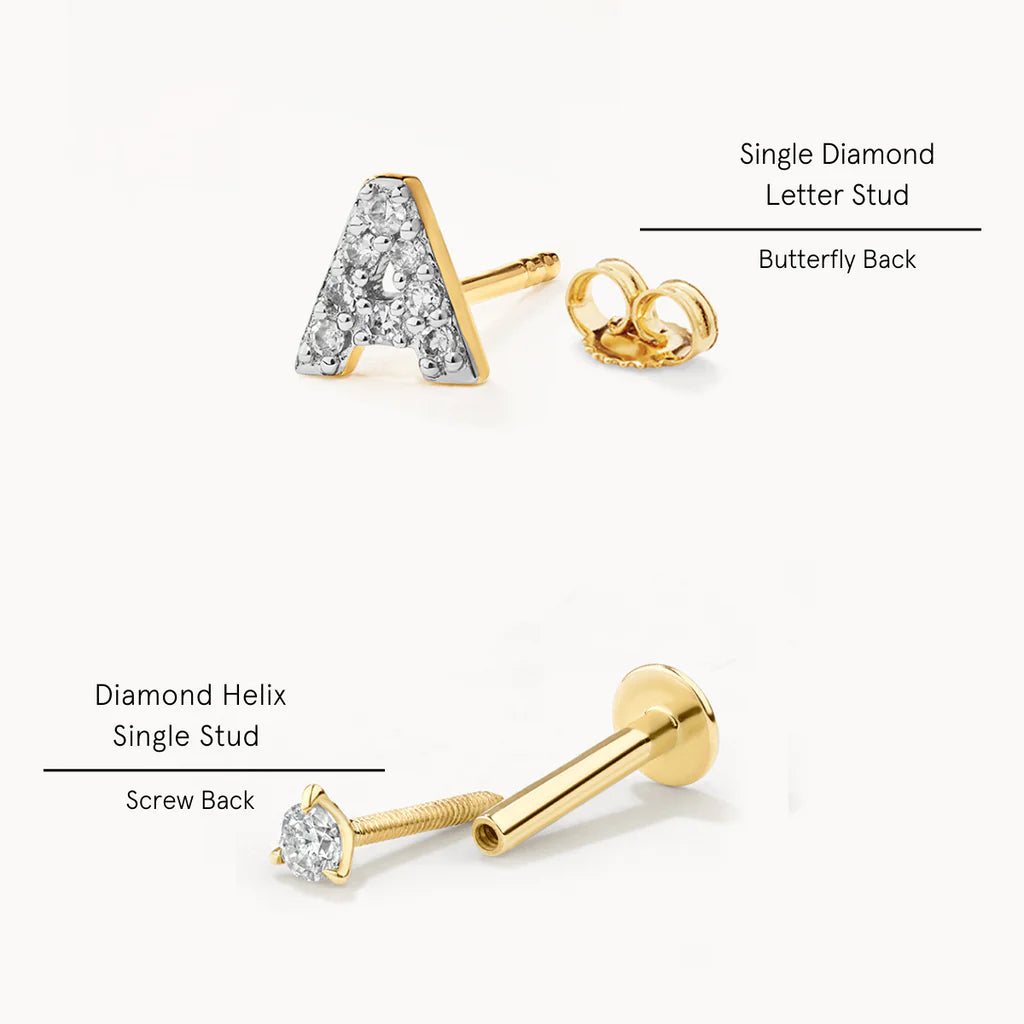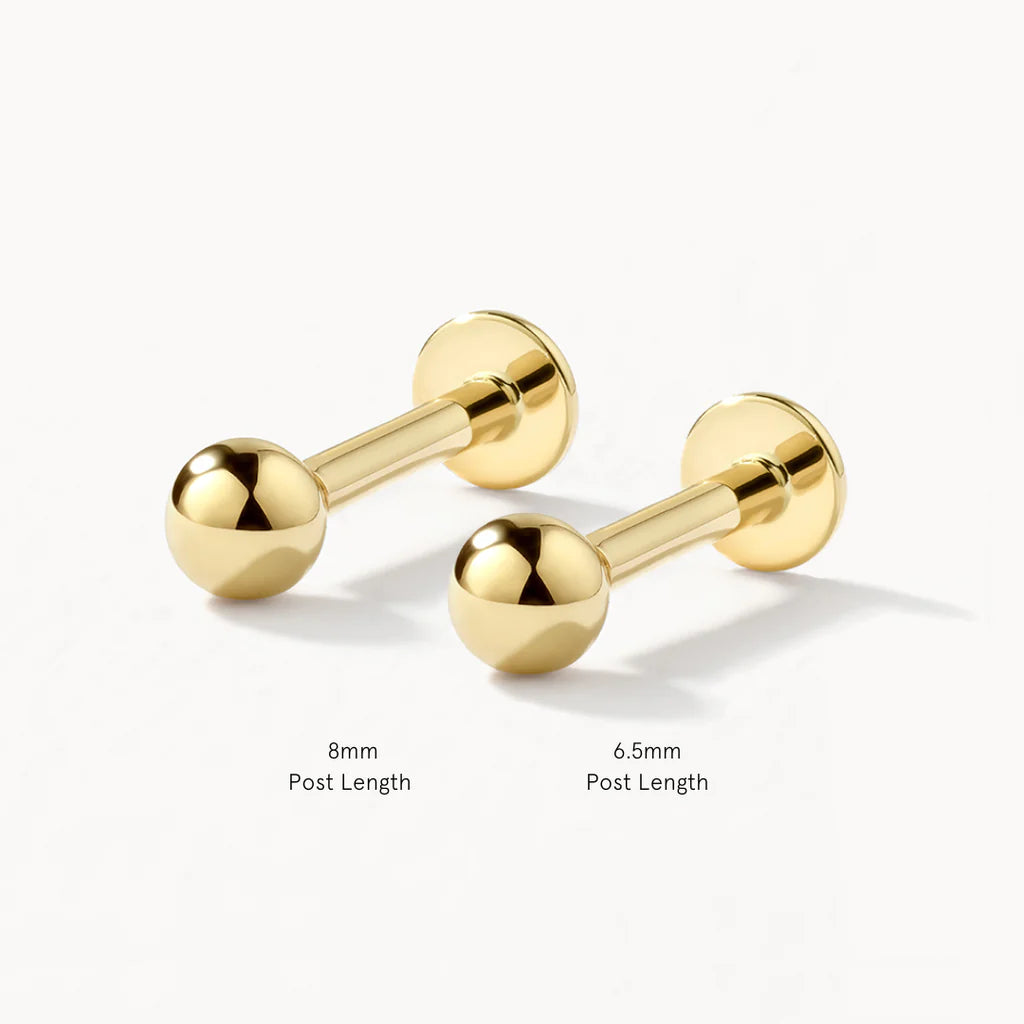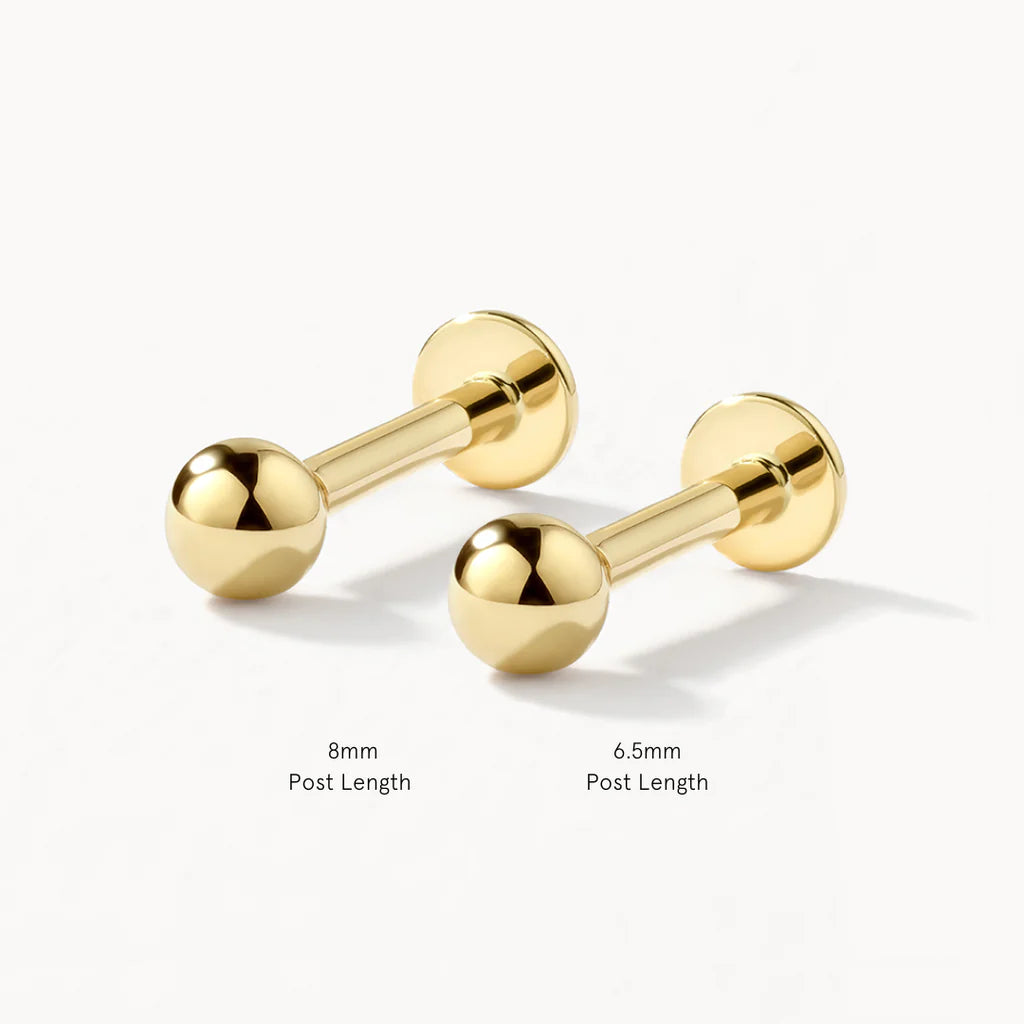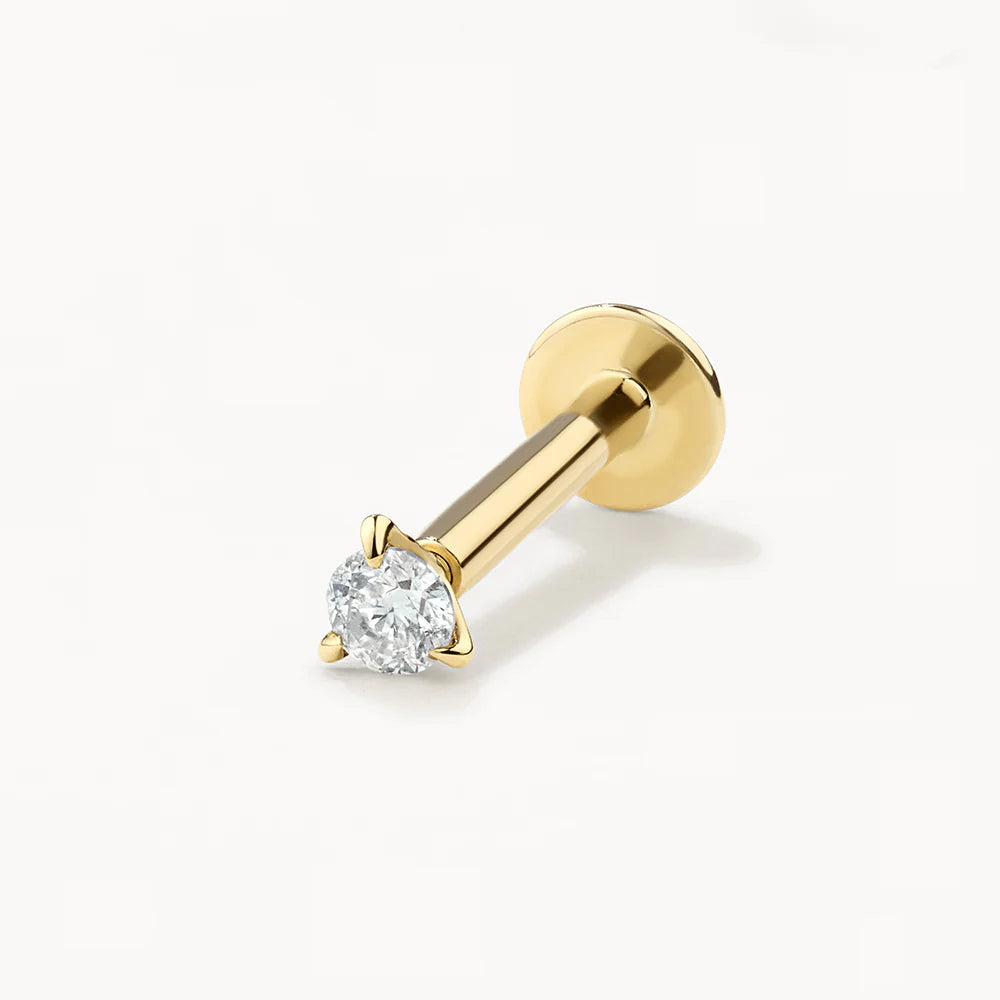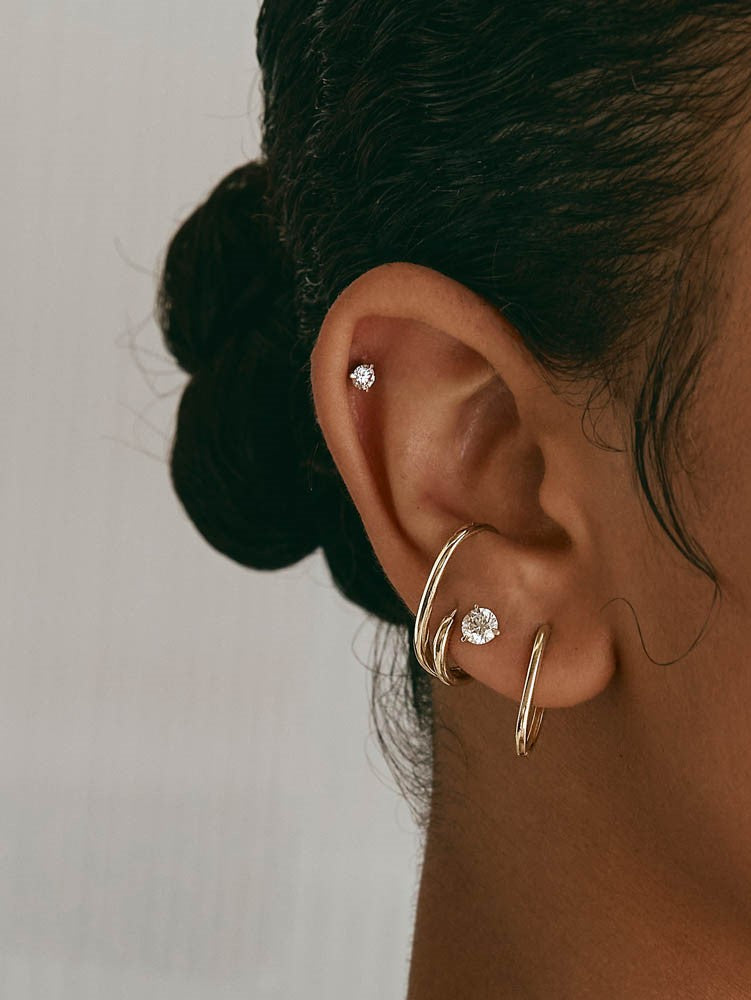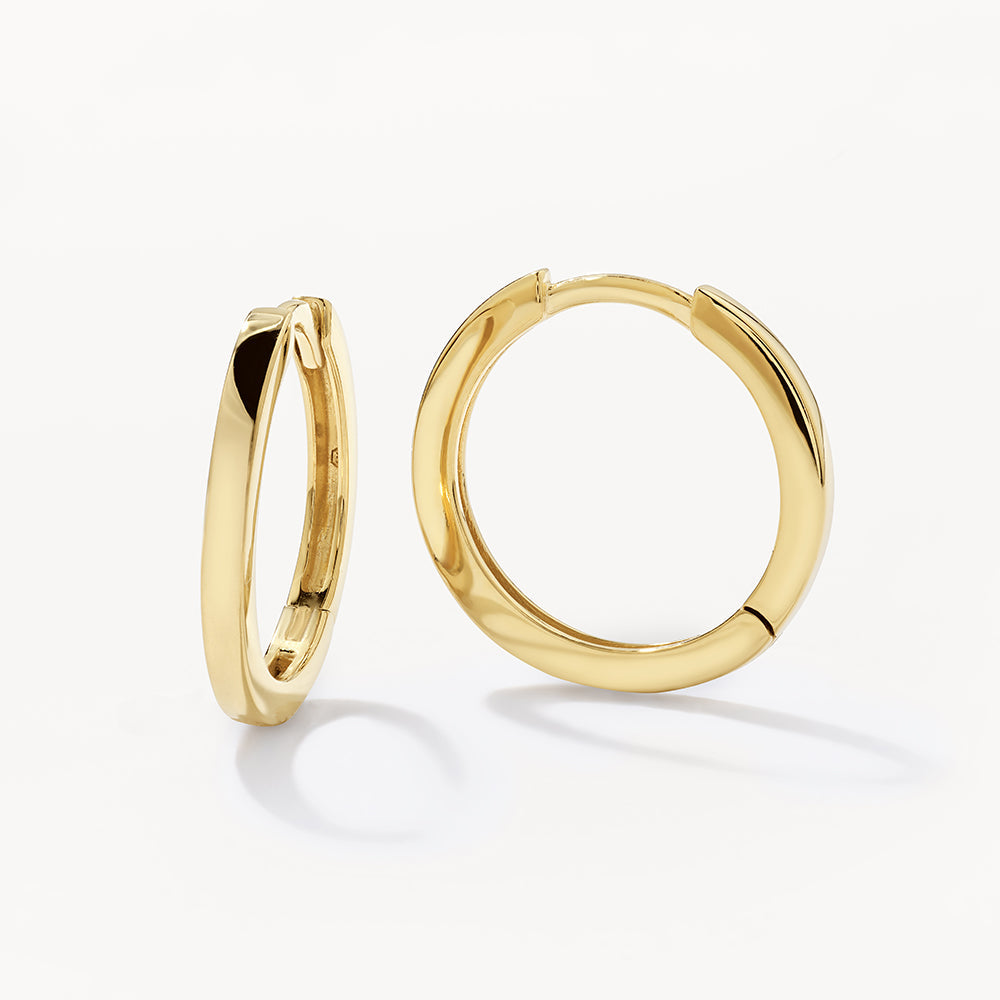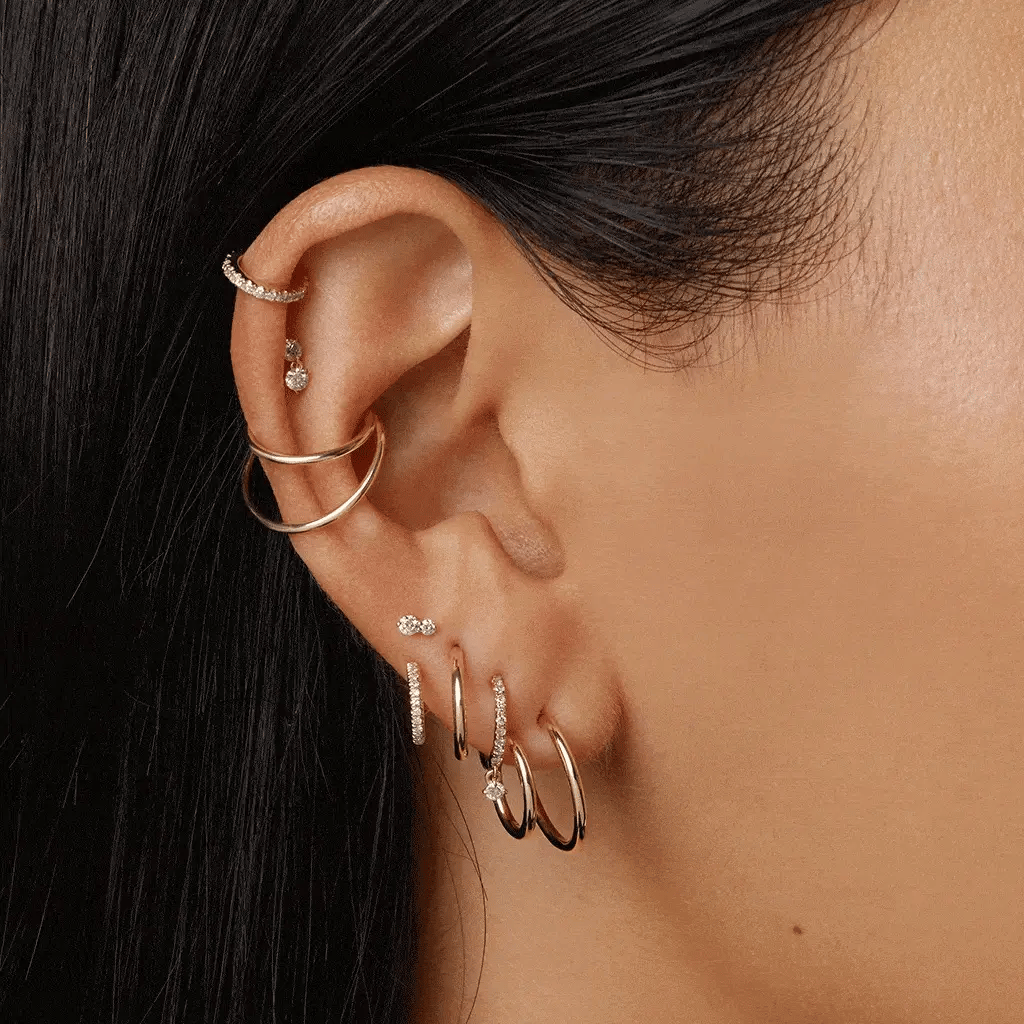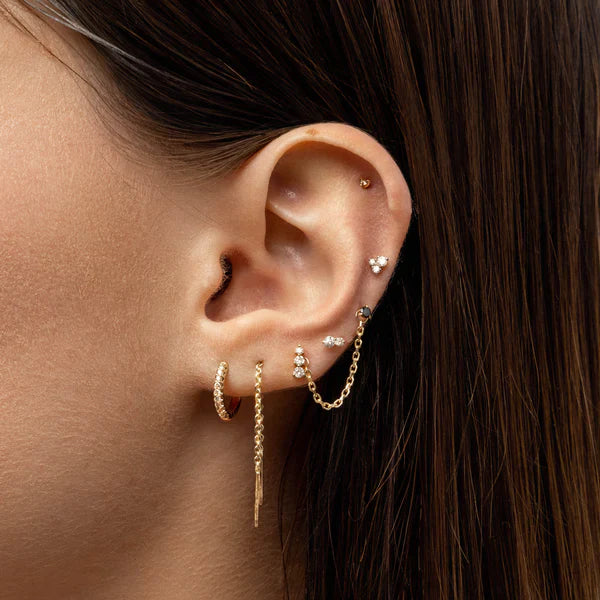All You Need to Know About Helix Ear Piercings! Lower, Double Forward Helix Piercings and More.
Que our simple 'how-to' guide designed to empower you to make the most of your stack styling... And perhaps take the leap with an easy, ear-elevating piercing: The helix. But, before you take the plunge, get to know what a helix piercing actually is, what you can expect from the piercing process, and then get excited with some styling inspiration (AKA the fun part).Whatever the reason for our collective love affair with a curated ear, this is a trend that more and more of us are getting on board with. So, if you’re reading this, chances are you’re looking to adopt the trend for yourself. Maybe you’ve made the foray into earring stacks with second lobe piercings, and now you’re looking to level up. After all, it’s when your piercings hit your helix zone that it really becomes an ear party.
Helix Jewellery
What is a Helix Piercing?
A helix piercing is made to accommodate an earring in the helix part of your ear. Your outer ear anatomy is largely made up of two zones – lobes and cartilage. However in the world of piercing, this cartilage is further divided up into zones including the conch, helix, rook, daith, and tragus. If those names mean nothing to you, you aren’t alone – you can get a run-down on the various ear piercing types here.
Let’s focus on the helix for now, though. Your helix is the cartilage that runs along the outer edge and top of your ears, finishing where it curves in to meet the side of your face.
The different helix piercing types & placements
There are a variety of different helix piercing styles that have become increasingly popular due to their aesthetic appeal and endless styling possibilities! Wondering if the helix could be your next piercing? We break down the most common helix types below:
Types of Helix Piercings:
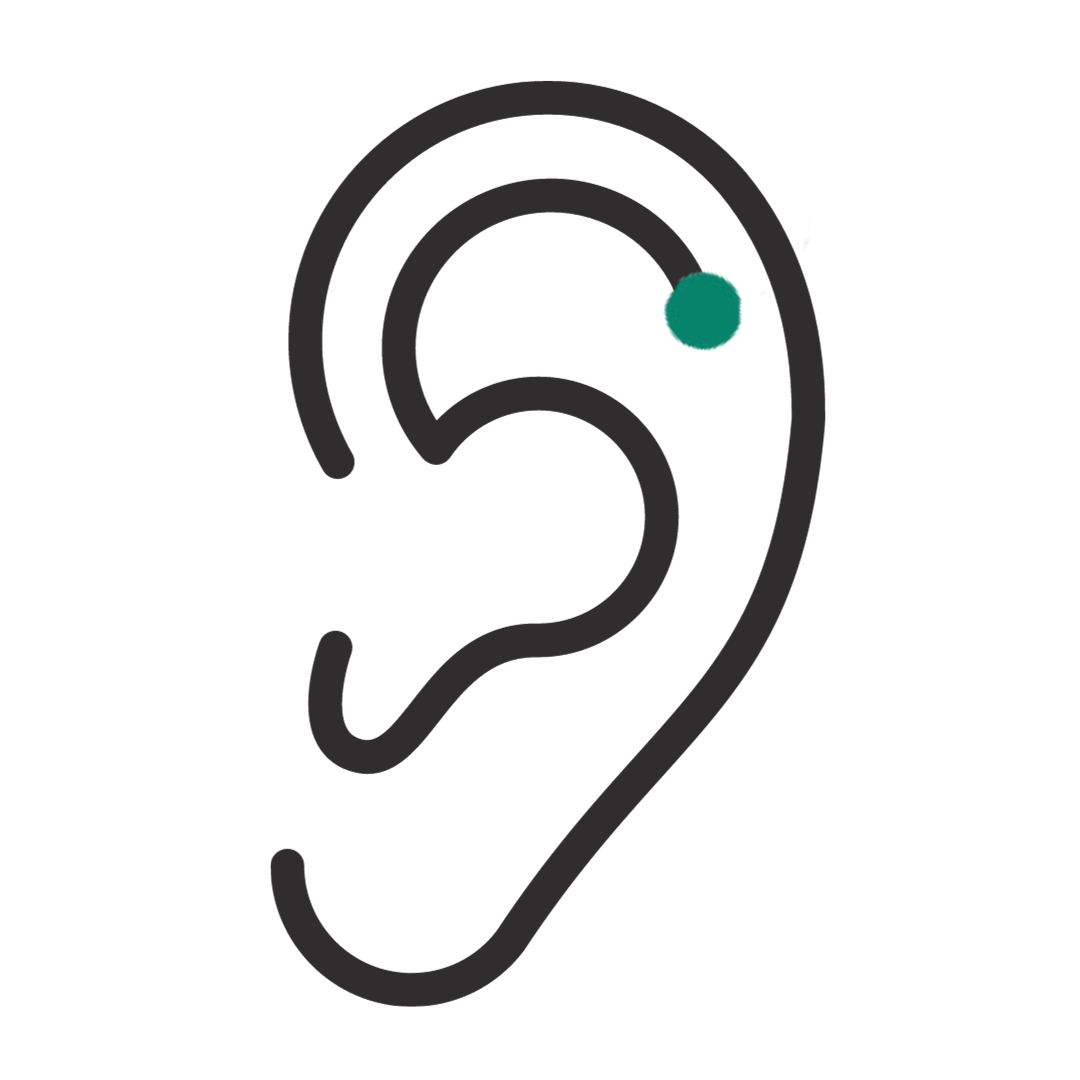
Single Helix
A single helix piercing is a type of ear piercing that goes through the upper cartilage of the ear, typically along the outer edge. It's called "single" because it involves just one piercing hole in the helix area, as opposed to double or triple helix piercings, which involve multiple holes.
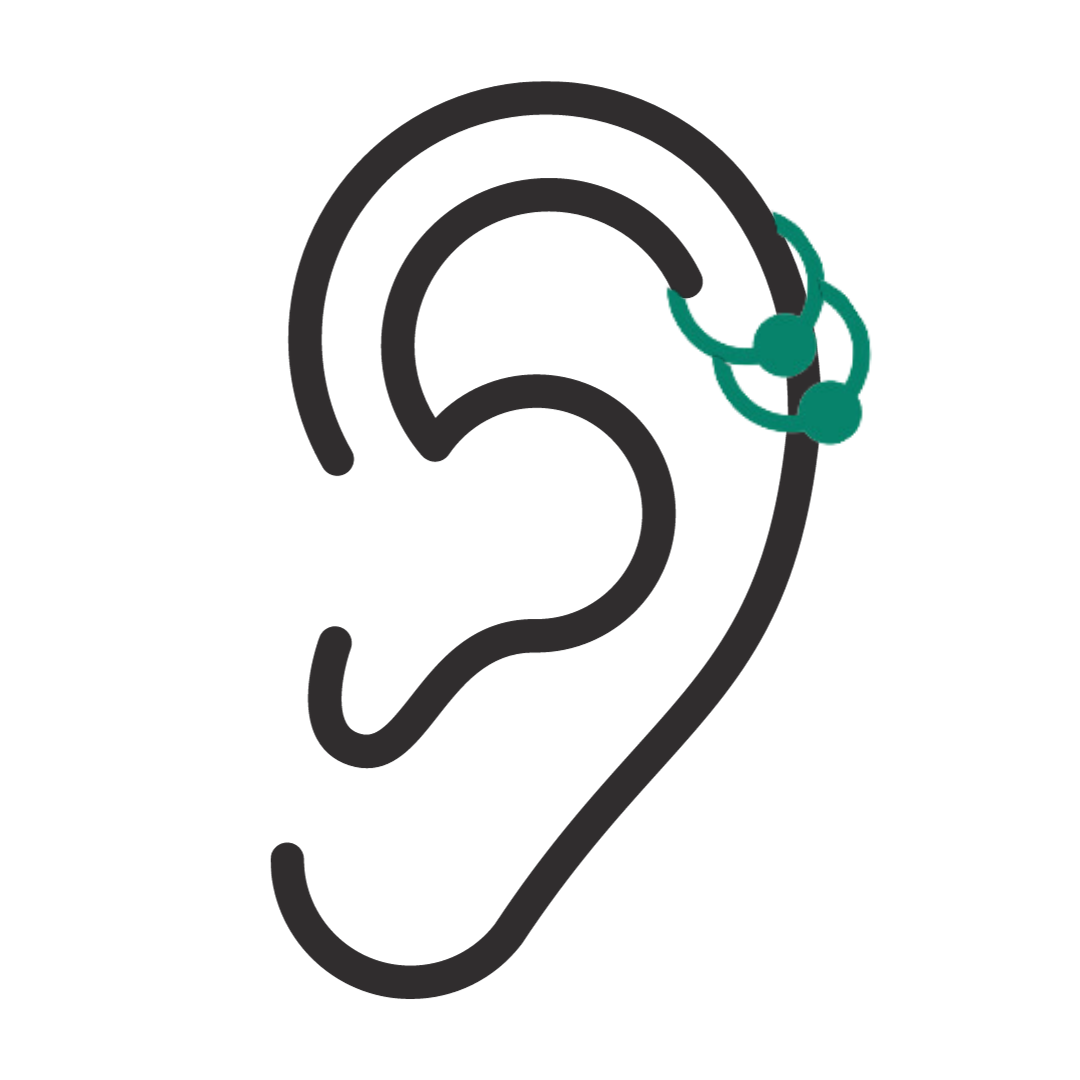
Double Helix Piercing
Want a helix piercing that makes a visual impact? A double helix piercing is typically two helix piercings stacked vertically with one piercing above the other. This sits on the outer edge of the ear below the natural curve of the top of your earlobe. A common styling technique is to include two small diamond studs next to each other for a simple and minimalist jewellery approach.
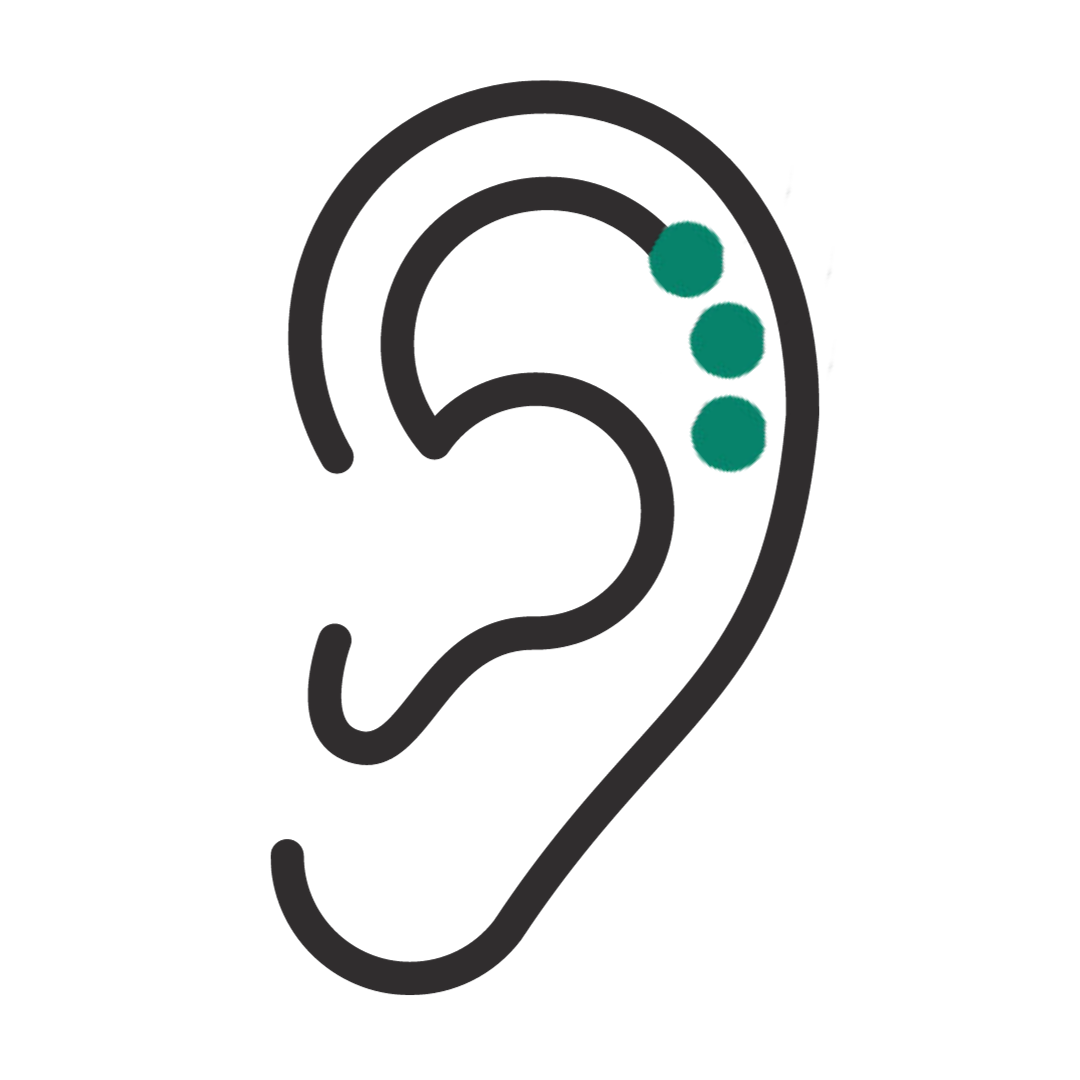
Triple Helix Piercing
If you’re looking for the ultimate curated ear look, a triple helix piercing is a simple way to elevate your ear styling. This group of piercings line the outside of the ear following the natural curve at the top of your earlobe. It creates a beautiful shape to the ear and with small studs can provide the simplitstic and refined fine jewellery style everyone is after.
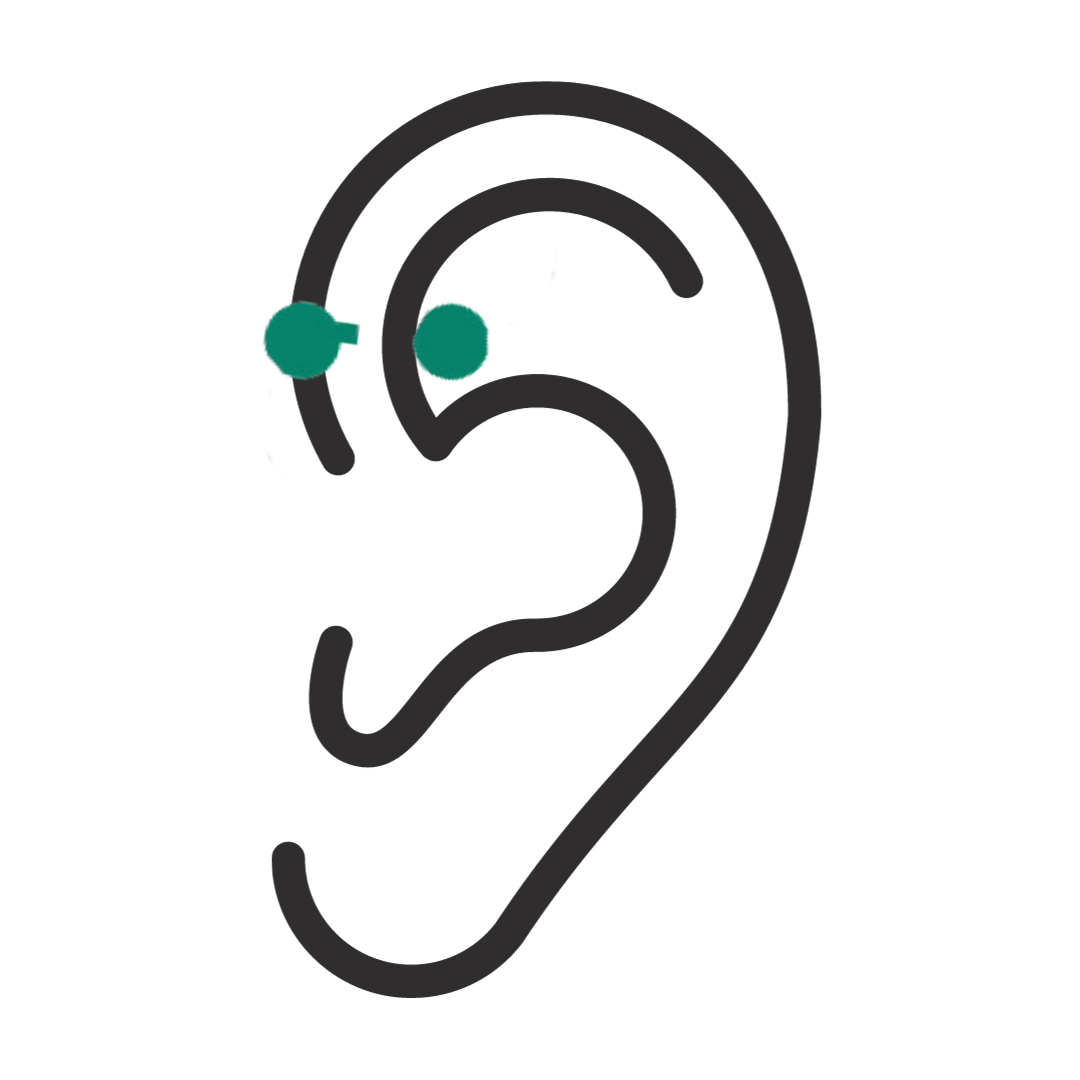
Forward Helix Piercing
Directly across from a regular helix piercing, the forward helix piercing is similar to a daith piercing and sits in the inner cartilage of the ear. It sits slightly higher than the daith piercing where the cartilage is a bit thinner. This is a stunning piercing style and is often styled with a small hoop or stud.
Piercing through cartilage: Everything you need to know
First things first: how are helix piercings performed? Cartilage piercings should always be done using a needle, as this is a sensitive area. It’s pretty rare to have any ear piercing done with a gun these days, but there certainly shouldn’t be a piercing gun anywhere near your cartilage!
A common question with any piercing is – how much will it hurt? Cartilage piercings are commonly more painful than earlobe piercings, but the good news is that the helix is said to be the least painful cartilage spot to get pierced. So, expect a bit of a pinch or sting at the piercing site.
How long does it take for a helix piercing to heal?
Cartilage piercings also take a bit longer to heal than lobes; expect it to take six to nine months, or possibly longer – everyone is different! Help the healing process by keeping your piercing clean, and by avoiding sleeping on it or moving your piercing jewellery around too much. Your piercer should be able to provide all the info you need to ensure proper healing.
But you don’t just want to take our word for it, right? Our eCommerce Coordinator, Jacqui, rocks a helix piercing so we asked her for the low-down.
“I made sure I went to a professional piercing store, as I wanted someone who knew exactly what they were doing (experience and hygiene are crucial when piercing!).
My number one tip is to request having the piercing position marked on the ear with a pen first. Unfortunately, they can’t try again after they pierce... and you don’t want a lopsided piercing!
It may seem a little daunting to get a piercing through cartilage vs lobe, but to be honest, the experience is over before you know it (and totally worth it!).It took about nine months for my helix piercing to heal, but I’d do it again in a heartbeat! It was a little tender for a while, so I found myself sleeping on the opposite side or on my back. I also made sure to be a little more careful when brushing my hair, I didn’t want to get my hair caught up in my piercing (which happened a lot at first).”
When can you change your helix piercing?
So you’ve finally got a helix piercing but are trying to figure out the day you can finally update that standard piercing store stud into a beautiful hoop or single stud? As helix piercings often take the longest to heal, they also require the most amount of time before switching out the jewellery. But trust us - it’s well worth the wait!
While we recommend taking the advice of your professional piercer, typically it takes between three to six months for the piercing to heal before changing it out. Our top tip is to visit your piercer for the first time you change your helix piercing. This will ensure it’s healed up correctly and help to avoid infection in the long run. On top of that, you can also learn how to change out the earring like a pro right from the first switch-out.
How to change a helix piercing?
Whether you’re an earring expert or this is your very first piercing, changing your helix piercing is a simple process. Plus, once you’ve got it down it can be a really quick thing to switch out on the go!Before touching your ear, it is important to sterilise your new helix piercing by wiping it down and spraying it with an earring disinfectant. Place on a paper towel on a flat surface in preparation to change it out.Next, wash or sanitise your hands and take out your existing helix piercing. Once your helix piercing is exposed, wipe it down with a clean towel and water and clean the old earring. You can also use a fragrance-free soap or saline solution to clean the surface of your ear. Then add in your newly sterilised helix earring and you’re ready to go!
How to clean a helix piercing?
To clean a helix piercing follow a similar process to the steps outlined above in our ‘how to change a helix piercing’ section. Simply start by washing your hands and cleaning the surface with an earring cleaning spray. Next, pat the area dry gently using a paper towel or tissue and repeat the process as necessary.
Regularly cleaning your helix piercing is a great hygiene practice to get into, but it also stops the ear from getting infected - a double win!
How much is a helix piercing?
So you’ve decided to take the plunge and treat yourself to a beautiful helix piercing? The cost of a helix piercing can differ greatly depending on the type of piercing parlour you visit and the helix piercing placement. This will change between ear piercing chains, chemists, boutique piercing salons, ear curation stylists and more.
Often pricing starts at around $40 if you’re looking to get an estimate, but we do recommend consulting with your chosen piercing expert to get an accurate quote.
The difference between a normal stud and helix stud
The key differences between purpose-made helix studs and regular stud earrings, are the backings and the way they are fastened.
While stud earrings generally have a butterfly backing that you slide onto the earring post to secure them, helix studs are designed with a threaded screw backing, finished with a flat end.
Basically, the front section of your helix stud earring is inserted into a tube-like backing which is screwed on to ensure a secure fit. The backing has a flat section at the end to ensure comfortable wear, and prevent the earring post from poking you. This is important for cartilage piercings, because this part of your ear sits close to your head.
Difference between 6.5mm and 8mm post
You might have noticed we now offer (most) of our helix flatback studs in two sizes, a 6.5mm and a 8mm post length. You may be asking, what helix post length is best for me? Ultimately, deciding between post lengths depends on the maturity of your ear piercing and the position of that piercing on your ear.
We find our 8mm post length a great intro length to helix jewellery. This is perfect for when your piercing is still healing within the first 6-9 months. This allows room for any swelling that may occur.
The 6.5mm post length on the other hand is perfect for your healed piercings, providing a tighter fit - meaning less movement and more comfort in your tragus, helix, or conch piercing.
How to style a helix piercing
The reason you got a helix piercing was so that you could get amongst the ear party, right? So, you should have fun with styling your ear stack, and use your cartilage earring(s) as a key part of your overall look.
We love dainty, diamond-adorned styles to bring a modern, minimalist touch of sparkle to your look.
Style a full diamond look, or mix up diamonds with your favourite gold or sterling silver hoop earrings. For ultimate style points? Stack a mix of precious metals, white and black diamonds in hoops, studs, and personalised style earrings.
TLDR: What do I need to know before getting a helix piercing?
Pain and Healing Time: Let's talk about the elephant in the room – yes, there might be some discomfort during the piercing process, and your ear might feel a bit tender afterward. But don't worry, it's totally manageable! Healing usually takes between 3 to 6 months, so patience is key.
Piercing Studio Selection: It's crucial to choose a piercing studio that's top-notch. Look for experienced piercers who prioritize cleanliness and follow strict sterilization procedures. Your health and safety come first, so don't compromise on this!
Jewelry Selection: Quality matters when it comes to jewelry. Opt for materials like surgical-grade stainless steel, titanium, or gold to minimize the risk of irritation. Your piercing journey should start with the right bling!
Consultation: Before taking the plunge, have a chat with your piercer. Ask questions, voice any concerns, and make sure you're crystal clear on the aftercare routine.
Commitment to Aftercare: Consistency is key! Commit to following your aftercare routine religiously – it's the secret sauce to a happy, healthy piercing. Clean it twice a day with saline solution or a gentle cleanser. And remember, hands off! Avoid touching it unnecessarily, and be gentle with your hair care routine.
Curate your perfect, individual look with our new range of single helix earrings, including diamond and micro diamond helix studs, and diamond helix huggies, crafted in 10k gold or sterling silver. Single earrings give you ultimate control to style your unique look, whether you have one helix piercing or multiple.
Our team member Jacqui lives in her Medley micro diamond helix stud.
“I am currently wearing the micro diamond helix stud in silver paired back with some plain silver hoops. The best thing about our new helix studs is that they are designed to be left in, so I can wear this everywhere and not have to worry! I am all about ear styling at the moment, so I consider my helix piercing as the final touch. But next time you catch me, I will probably have a few more!”
Style your ear party with our range of single earrings. Shop the collection of helix earrings and other beautiful jewellery pieces online today.
Our Fave Helix
The Diamond Helix Single Stud Earring in 10k Gold will top off your gold or diamond ear party. Available in both 6.5mm and 8mm post lengths, 10k Gold and 925 Sterling Silver.
Curate Your Ears!
FAQs
A forward helix piercing is a type of ear piercing located on the outer rim of the ear, specifically in the upper front part near the face. It's positioned in the helix area, closer to where the ear connects to the head, and typically sits above the tragus. This stylish and delicate piercing can be fit with flat back studs, hoops, or elegant labrets, offering a subtle yet striking addition to your ear jewellery collection.
A double helix piercing involves two consecutive piercings along the upper cartilage of the ear, known as the helix. These piercings are typically placed close together in a vertical line, allowing for creative and complementary ear curation. You can fit them with matching flat back studs, cute hoops, or a mix of both to create a unique and stylish look that highlights your personal style.
A lower helix piercing is located on the outer rim of the ear, positioned just above the earlobe and below the standard helix area. This piercing offers a versatile spot for various jewellery styles, including small hoops, flat back studs, and huggies. Its placement allows for a subtle yet distinctive look, perfect for adding a touch of individuality to your curated earring stack.
An upper helix piercing is situated on the upper part of the ear's outer rim, higher up than the standard helix piercing. This location is ideal for showcasing elegant flat back studs, adding a stylish and contemporary touch to your ear jewellery collection. The upper helix piercing stands out due to its prominent placement.
A mid helix piercing is located on the outer rim of the ear, roughly halfway between the upper and lower helix. This placement offers a balanced and eye-catching spot for various jewellery types, such as flat back studs, small hoops, or elegant cuffs.
Yes, a low helix piercing goes through the cartilage. It is situated on the outer rim of the ear, just above the earlobe and below the standard helix area. Like other cartilage piercings, it requires proper aftercare and attention to healing to avoid irritation or infection. This type of piercing allows for a variety of jewellery options, our size guide for cartilage piercings can help you find the perfect earring for a low helix piercing.
A triple helix piercing consists of three piercings in the helix, or outer rim, of the ear. These piercings are typically aligned vertically or slightly spaced out, allowing for a cohesive and chic arrangement. You can adorn a triple helix piercing with matching studs, small hoops, or a combination of both to create a distinctive and eye-catching look. This type of piercing offers a bold and fashionable way to personalise your ear curation.
You can usually change your helix piercing to a hoop after about 6-9 months, once it's fully healed. Always ensure that the piercing is completely healed before switching to avoid irritation or infection. It's best to consult with your piercer to confirm it's the right time.
To remove a helix piercing with a flat back, gently hold the flat back of the stud while unscrewing the front piece from the rear. Ensure your hands are clean to prevent introducing bacteria to the piercing. If you find it tricky, it might help to visit your piercer for assistance.
Removing a helix piercing requires care. Start by washing your hands thoroughly. If you have a stud, hold the back of the jewellery steady and twist the front piece to unscrew it. For hoops or huggies, gently unclick the lever opening, find the gap and carefully slide it out. Always be gentle and take your time. If the jewellery feels stuck, don’t force it—it's best to see a piercer for help.
You should wait until the tenderness has subsided before sleeping on your helix piercing, or until it is fully healed. Sleeping on it too soon can cause irritation or delay healing. If you must sleep on that side, use a travel pillow to keep pressure off the piercing.
The piercing at the top of the ear is called a helix piercing. It's located along the upper ear cartilage and is popular for its versatility in jewellery styles, from studs to hoops.




